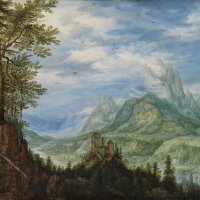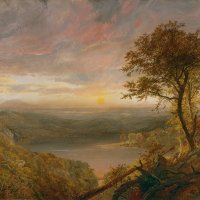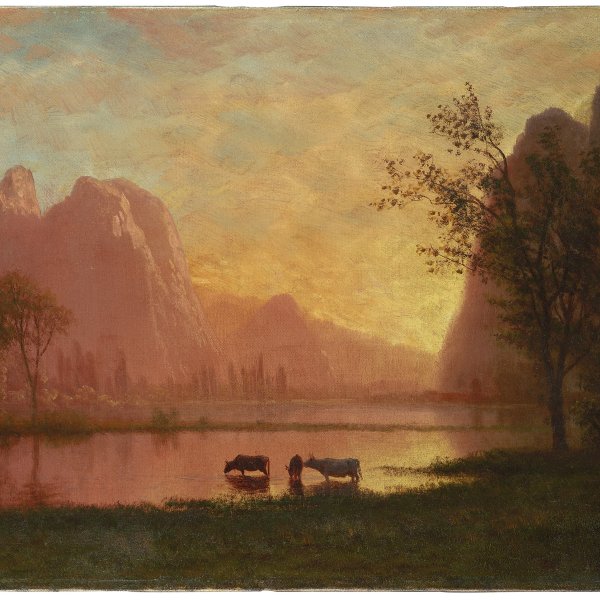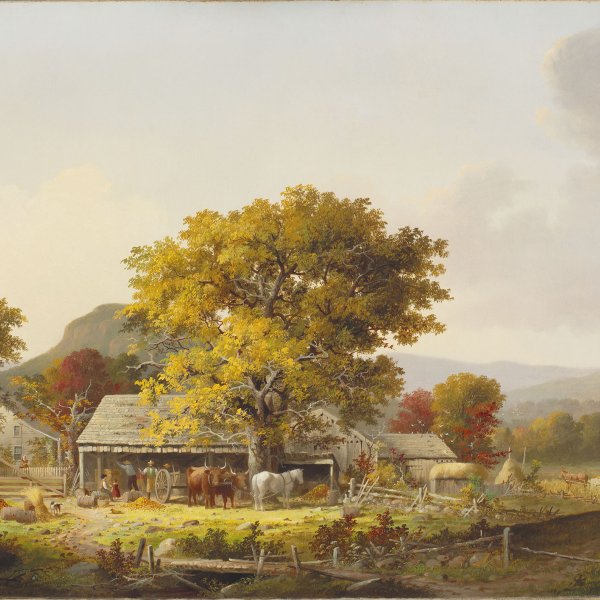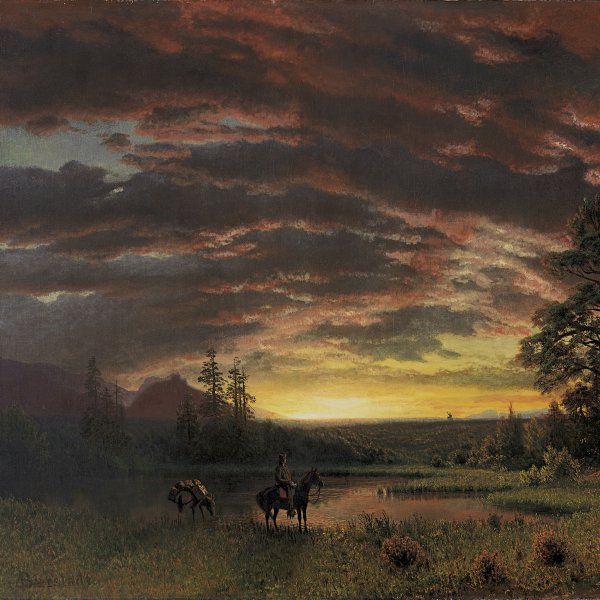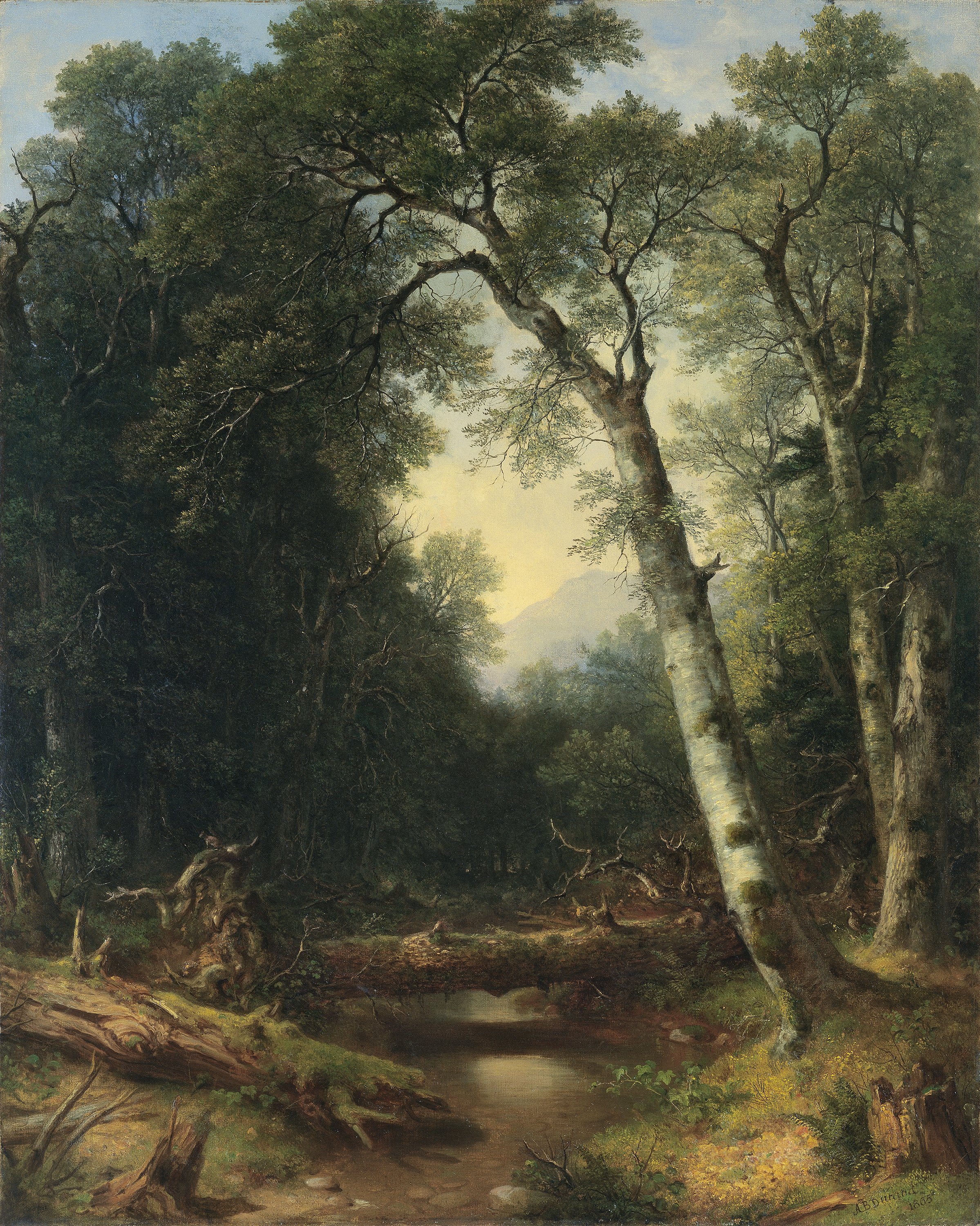A Creek in the Woods
Around 1837, Asher B. Durand made a number of trips in the company of Thomas Cole, the founding figure of the Hudson River School, during which he developed a new approach to painting. The studies from life resulting from these trips became the bases for future compositions such as A Creek in the Woods, which is notable for its use of realism and minute detail.
A large silver birch, one of the artist’s favourite trees, is located beside a creek with fallen trees across it. Hidden among them are a tiny squirrel and a pheasant that are almost impossible to see at first glance. These scenes of woodland interiors, which Durand depicted on numerous occasions, are imbued with a sense of intimate tranquillity. The sky only appears through the branches of the trees or above the mountaintops. The absence of human forms and the majestic presentation of nature conform to a vision of America as an untamed, virgin land. In this natural paradise the inhabitants are closer to God’s divine grace through a spiritual connection with their surroundings.
CM
A Creek in the Woods, dated 1865, is a good example of Durand’s landscape style and his personal manner of portraying the depth of the forest. Influenced by the works of Claude Lorrain and the English painter John Constable, whom he had had the chance to admire during his trip to Europe in 1840, Durand established a type of landscape with towering trees in the foreground, whose monumentality is emphasised by the use of vertical format. These American forest giants, which overstep the limits of the picture, convey the force of nature and form an arch that frames the clearing in the forest through which the light filters, giving the picture the appearance of the interior of a Gothic cathedral. These compositions have their literary equivalent in the poems of William Cullen Bryant, such as A Forest Hymn, the first verse of which refers to the forest as a place of worship, stating that “The groves were God’s first temples.”
Although this large painting was executed in the painter’s studio, the precise rendering of the tiniest details attests to the important role played by sketches from life, which were an essential part of the painter’s creative process. The scientific observation of nature that characterises landscape painting is reflected in the minute detail of the particular features of the vegetation. Beeches with their silvery bark, one of Durand’s favourite species of tree, are depicted as if in a portrait. “Every kind of tree, wrote Durand in one of his ‘Letters on Landscape Painting’, has its traits of individuality.”
However, Durand’s aim was not simply to produce a meticulous rendering of nature; rather, influenced by the ideas of his master, Thomas Cole, he wished to imbue the landscape with a religious and moral meaning. The fallen trees that dominate the left-hand side of the painting can therefore be taken as a reference to the cycle of life, to God’s control over nature’s schemes; similarly, the light and calm waters of the stream may be regarded as the divine attributes of the earth. In addition, both the pheasant resting peacefully between the two large trees and the playful squirrel perched on the roots of the fallen tree indicate the absence of human life in the forest. This savage and divine natural landscape, in which there is not a single trace of man, is conceived under the consideration of America as a new Eden, where the scenery is a manner of communicating with the Divinity.
Paloma Alarcó

